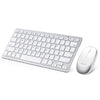It’s no secret that the iPhone is made of premium quality materials, with its Gorilla Glass screen, sapphire crystal lens coating, and circuitry made of Peruvian Gold and Chilean Copper. But despite the quality of these materials, the iPhone is not impervious and can still be damaged quite easily.
This is especially true for the iPhone’s camera module which is obviously an extremely vital (and expensive) part of the device. So, if you’ve been browsing ways to protect this integral part of your iPhone and came across lens protectors, you may be curious about their functionality and if they’re really worth it. Well, browse no further! We’ve come up with 5 facts about iPhone camera lens protectors that you need to know!
Are iPhone Lens Protectors Worth It?
These days, you can spend as much money on iPhone accessories as you do on the iPhone itself; however, we wouldn’t consider a lot of the accessories out there to be worthy of the cliche epithets of “must-have”. In the case of iPhone lens protectors, they are certainly worth using given that they provide crucial protection to an extremely important and expensive part of the device, have no effect on image quality, and are affordable for pretty much anyone. When it comes to iPhone accessories, lens protectors definitely earn the overused title of “must-have”.
Does iPhone Camera Lens Protector Affect Picture Quality?
It’s completely fair to suspect lens protectors of lowering picture quality, and you’d be right in doing so, considering that, if installed incorrectly, you will almost certainly notice a degradation in image quality. If installed correctly, iPhone lens protectors will have no effect whatsoever on the iPhone’s high-definition picture quality. The two main things to pay attention to when installing your iPhone lens protectors are making sure that it is clean and that there are no particles between the lens protector and the camera and to be certain that the placement of the lens protector is accurate.
How to Choose iPhone Lens Protector
Choosing an iPhone lens protector can be daunting, considering how many options there are available. To help you sift through all those choices, here are some tips on how to choose an iPhone lens protector.
- Don’t Choose Plastic. Lens protectors are made of either plastic or tempered glass of varying qualities. The plastic ones aren’t nearly as durable as the tempered glass varieties and the tempered glass ones have much better transparency, so image quality will not be sacrificed even slightly. Spend a little more money and get a higher quality tempered glass one.
- Check Compatibility. The size, placement, and arrangement of smartphone cameras differ depending on brand and model, so it is crucial that you double check that a given lens protector is compatible with the model of your phone.
- Go for 0.3mm Thickness. The thickness of a lens protector will affect the aesthetics of your phone and its compatibility with cases. It is recommended to use a lens protector with a thickness of 0.3mm to avoid any issues, so long as it is made of a high quality tempered glass.
- Look for 9H Hardness. When you shop for a lens protector, you will likely come across things like 5h, 9h, Mohs, etc. in the product description. These figures are referring to the Mohs hardness scale which is the standard measure for hardness. There are 10 degrees of hardness with only the diamond reaching 10h and the human fingernail sitting at around 2.5h. A good quality lens protector should have a hardness of 9h, being comparable to a conundrum or a masonry drill bit. This will ensure that your iPhone camera is safe from physical damage.

How to Put on iPhone Camera Lens Protector
Step 1 - Wipe the lens with the wet screen cleaner then dry it with a dry wipe. This will remove any particles that would prevent the lens protector from sticking properly or affecting image quality.
Step 2 - Remove the lens protector from the package. There is a sticky side and a smooth glass side. Do not touch the sticky side or place it sticky-side down on any surfaces.
Step 3 - Align the protector with the lenses and gently stick it into place. Once you have placed it in position, make sure that the lenses are not obscured by any edges. You can look in your viewfinder for both front and back facing cameras to make sure it is placed correctly.
Step 4 - Put some light pressure on the lens protector to make sure that it is completely adhered to the camera. Look around the edges where the lens protector and the iPhone meet and make sure there are no gaps or air bubbles. Once you’ve determined that it’s stuck on there tightly with no camera interference, you can get back to snapping pics without worrying about damaging your iPhone camera lenses!
How to Remove iPhone Camera Lens Protector
You’ll have a hell of a time trying to remove an iPhone lens protector with just your fingernails as they are thin and well adhered to the device, not giving you much grip or even a lip to work with. But it can be done! Here’s how:
Step 1 - Turn off the device and apply a warm damp towel to the camera area. This will help to loosen the glue.
Step 2 - Use something thin but non-metallic to work into the edge of the lens protector. A toothpick, guitar pick, or even a credit card can work.
Step 3 - Gently use the toothpick, guitar pick, or credit card to lift the lens protector off of the camera. It should pop off quite easily once you begin working at it.
Step 4 - Use a wet screen wipe and a microfibre towel to wipe off any remaining glue from the camera area. After this, you’re done!
Best iPhone Camera Lens Protector Reviews
With so many options out there, even if you read our breakdown of how to choose an iPhone lens protector, you’re still going to spend more time than necessary to make your decision. To help expedite this process, we’ve compiled a short list of the best iPhone Camera Lense protector reviews.
Spigen Optik makes a superb and affordable lens protector made of tempered glass with 9H hardness and edge to edge coverage. It’s your no frills, standard yet dependable option if you’re looking to try out a lens protector. Do note; however, that Spigen Optik’s lens protectors tend to need replacing every few months because their adhesive tends to degrade rather quickly.
These stylish looking protectors help make your phone look unique as well as offer great lens protection. They also boast 9H hardness and complete coverage and anti-glare photo taking. They will stick to your camera pretty much until you take them off yourself; however, they are a little on the expensive side for the purpose they serve.
Like all of OMOTON’s iPhone accessories, their lens protectors are made of high quality material. OMOTON’s lens protectors are made of 0.3mm premium 9H tempered glass and have an anti-fingerprint oleophobic coating, which helps to maintain clear picture quality. OMOTON’s lens protectors also do more than just cover the lenses, they provide complete protection for the entire iPhone camera module, so those more sensitive areas between the lenses are protected as well. Furthermore, OMOTON’s case-friendly lens protectors usually include them with their screen protectors, so you’re getting more bang for your buck when you go with OMOTON’s lens protectors.


























![[iOS System] Seamless KB066](http://omoton.com/cdn/shop/files/B00B24I4II-1_100x.jpg?v=1686815508)
![[Mac System] Seamless KB066](http://omoton.com/cdn/shop/files/B09899K4L6-1_c724630c-c160-4901-9900-f670acc91416_100x.jpg?v=1686732854)



![[2 pcs] Full Protection A020-iPad Pro 11](http://omoton.com/cdn/shop/products/3a69674b6a96497b2ffd7f3025a80d58_e9954f3e-86f5-43e6-9a80-575bcfebd158_100x.jpg?v=1686381536)
![[2 pcs] Full Protection A017 - iPad 10.2 inch](http://omoton.com/cdn/shop/files/61tTSoyyuuL._AC_SL1500_100x.jpg?v=1686021560)
![[3 pcs] Rugged & Robust A013-iPhone 11/XR](http://omoton.com/cdn/shop/files/61po0_qv46L_100x.jpg?v=1686032850)
![[3 pcs] Rugged & Robust A013-iPhone 14](http://omoton.com/cdn/shop/files/16c0b02250912a03578c8b2af6825f11_100x.jpg?v=1686708163)
![[3 pcs] Rugged & Robust A036-iPhone 14 Pro](http://omoton.com/cdn/shop/files/1_2_100x.jpg?v=1686022078)
![[3 pcs] Rugged & Robust A013-iPhone 14 Pro Max](http://omoton.com/cdn/shop/files/1_2_2_100x.jpg?v=1686023071)
![[3 pcs] Rugged & Robust-iPhone 13](http://omoton.com/cdn/shop/files/71HO0AZn0BL_100x.jpg?v=1688522739)
![[3 pcs] Rugged & Robust-iPhone 13 Pro](http://omoton.com/cdn/shop/files/71pE0jfT24L._AC_SX679_100x.jpg?v=1688523892)
![[3 pcs] Rugged & Robust-iPhone 13 Pro Max](http://omoton.com/cdn/shop/files/71c1zssdVHL._AC_SX679_100x.jpg?v=1688527213)
![[3 pcs] Rugged & Robust A024-Samsung Galaxy A14](http://omoton.com/cdn/shop/files/1_2_68d89e60-61af-4cba-9867-9a91941aee01_100x.jpg?v=1686030778)















